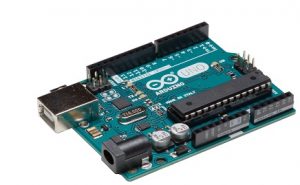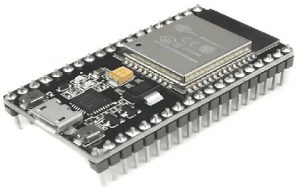Arduino and ESP32 are the two most popular development boards based on microcontroller or hardware platforms which have impacted embedded systems & DIY projects significantly. These development boards work similarly but, they differ in terms of programming, hardware, processing power & different factors significantly. The ESP32 development board was developed by Espressif Systems with high performance, in-built Wi-Fi & Bluetooth capabilities whereas the Arduino board has become identical with simple use & vast community of users, so it is a very popular choice for educators & hobbyists. This article provides brief information on ESP32 vs Arduino boards.
Difference between ESP32 vs Arduino
Both ESP32 & Arduino microcontroller boards are very famous among researchers, students, and beginners because they can take inputs & produce output accordingly and they don’t require any additional hardware to process the data like CPU. These boards are very small in size, so they can fit easily in your pocket. The main difference between Arduino vs ESP32 helps you in selecting the correct platform for your application.
What is Arduino?
Arduino board is a type of open-source development board, used for building embedded designs, wearable devices, electronic gadgets, IoT projects & robotics. These boards help in developing various electronic projects & also devices by simply connecting various sensors & motors. The Arduino board includes an ATmega328P 8-bit microcontroller with 0 to 13 digital pins. These pins are used for both digital input & digital output where digital input is to read from the device and digital output is to send data from Arduino to the device.

The operating voltage of this board is 5v with 45 to 80 mA of current consumption and it consumes 35 mA in deep sleep. This board can be powered either using a USB connection or a 9V battery from the computer or a power supply. The operating frequency of the Arduino board is 16 MHz so 16 million instructions are performed for every second.
Please refer to this link for the Arduino Board.
What is ESP32?
ESP32 is a WIFI and Bluetooth-enabled low-cost development board. These boards play a significant role in developing IoT-based projects due to in-built wireless technology. The operating voltage of this board ranges from 2.2v to 6v through the onboard regulator for providing constant voltage & an available > 500 mA of output current. ESP32 development board includes a dual-core processor to run each other independently and 4 MB of flash memory which makes this board very fast.
This development board is mainly designed for cost-effective, power-efficient & simple IoT-based applications because of integrated Wi-Fi & Bluetooth, it is built around a dual-core Tensilica Xtensa processor, 160MHz frequency, SRAM – 520KB, GPIO pins – 34, etc. This board can be programmed simply with the Arduino IDE, MicroPython, Lua, ESP-IDF, JavaScript, etc. ESP32 wide operating temperature ranges from -40°C – 125°C.

ESP32 vs Arduino
The ESP32 vs Arduino are discussed below.
|
ESP32 |
Arduino |
| ESP32 is a low-power and low-cost SoC (system on a chip) series with dual-mode Bluetooth & Wi-Fi capabilities. | The Arduino board is an open-source development board. |
| It includes Tensilica Xtensa LX6 CPU. | It includes an 8-bit ATmega328P microcontroller. |
| Its operating voltage is 3.3v. | Its operating voltage is 5v. |
| It has 520KB – RAM. | It has 2KB – RAM. |
| It has an in-built Wi-Fi and Ethernet port. | It has Ethernet shield internet connectivity. |
| Bluetooth connectivity is present. | Bluetooth connectivity is not present. |
| Software used is Python, micro python, C & C++. | The software used in this board is C/C++ languages. |
| It needs operating systems like Raspbian and Ubuntu. | It doesn’t use any operating system. |
| Its operating frequency is up to 240 MHz. | Its operating frequency is 16 MHz. |
| It has 32 KB – flash memory. | It has typically 4MB of flash memory but it can vary. |
| These are not expensive as compared to Arduino. | These are expensive. |
| It is from the ESP family. | It is from the Atmega family. |
| It has 18 – Analog input pins. | It has 6 – Analog input pins. |
| It has 34 GPIO pins. | It has 14 GPIO pins and 6 of them provide PWM o/p. |
| There are different types of ESP32 boards like; ESP32 DEV KIT DOIT, DevKitC, PICO, EYE, Thing, CAM, 32s, etc. | There are different types of Arduino boards like; Arduino Uno, Mega, Nano, Leonardo, etc. |
| ESP32 strengths are; high processing power & connectivity features. | Arduino’s strengths are; simplicity & community support. |
Thus, this is an overview of ESP32 vs Arduino. ESP32 development board is appropriate for advanced projects that need higher processing capabilities & connectivity like; smart home applications, industrial automation & IoT devices. Arduino board’s simplicity will make it to use for educational purposes, hobbyist projects & art installations. ESP32 board provides very advanced features & robust processing which makes it appropriate for complex applications whereas the Arduino board with its accessible approach will be used by beginners & education. Here is a question for you, what is ESP32 CAM?
